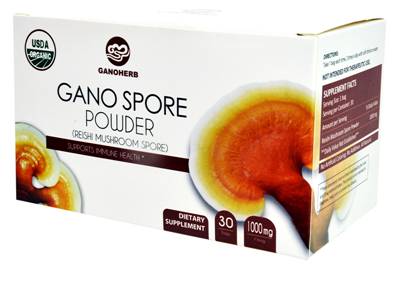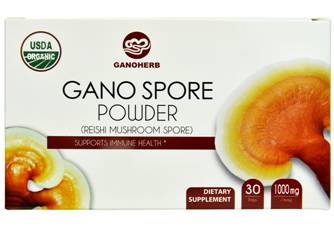At this time, China's farmland has entered the growing season of winter crops such as big wheat and rapeseed. Doing a good job of prevention and control of diseases and pests of pre-winter grain and oil crops is very important for reducing the number of wintering pests and diseases, reducing the occurrence of pests and diseases of spring crops next year, and ensuring the harvest of spring crops. The pest control and chemical weed control techniques for winter grain and oil crops are as follows:
First, the occurrence of diseases and weeds
The wintering of Laodelphax striatellus and black-tailed leafhoppers in winter, the occurrence of rice stripe disease, black-streaked dwarf disease and corn virus disease transmitted by Laodelphax striatellus have been enlarged and aggravated. It will still be high, which is beneficial to the occurrence of rice black streaked dwarf disease and corn virus disease. This year, wheat has been harmed, and stripe leaf blight is common, and some fields are seriously damaged. Spring grass crops have a large number of types of grass weeds. Because the sowing of winter crops (transplanting) to seedling stage is the key period for pest control and chemical weed control, therefore, all regions should scientifically formulate prevention and control based on the actual conditions of winter crops and diseases, pests, and weeds, combined with the new occurrence of diseases, pests and weeds. Technical measures, and through various kinds of publicity methods such as pest information, technical materials, and blackboard reports, as well as on-site conferences and training courses, intensified prevention and control technology propaganda and training efforts, and strived to increase the rate of prevention and control technology measures in place.
Second, prevention and control of technical advice
(A) Do a good job of seed treatment of wheat, to reduce the occurrence of species-borne diseases. To do a good job in seed treatment before sowing is the key to controlling the diseases of seed propagation and disease in early stage of wheat seedlings, and has the effect of doing more with less. It actively guides farmers to carry out seed treatment. Seed treatment methods include seed dressing and soaking: use 25% triadimefon wettable powder 50g seed dressing 50kg wheat seed, or 50% carbendazim wettable powder 100g add water 50kg liquid soaking 24 hours later remove Let dry sowing.
(2) Doing a good job of prevention and control of seedling pests in spring crops and controlling the occurrence of viral diseases. The seedling stage of crops is susceptible to viral diseases. Therefore, prevention and control of rapeseed sprouts and wheat field planthoppers in rapeseed fields is the key to preventing and controlling the occurrence, spread, and spread of viral diseases. When the rape seedlings have a pod strain rate of 3% to 5% or when the pod plant has more than 10% after transplanting, the medicament is used for prevention and treatment. In the areas of rice black-streaked dwarf disease and striped beetle disease, it is necessary to prevent and control wintering planthoppers, and to combine the chemical treatment of spring flowers to add chlorpyrifos and pyrethroids as pesticides.
(c) Vigorously carry out chemical weeding to reduce the loss of weeds.
1. Wheat field chemical weeding technology
(1) No-tillage wheat field weeding before sowing. 5-7 days before sowing in wheat field, with 10% glyphosate water 400-600 ml, or 41% glyphosate water 150-200 ml, 20% paraquat water 200 ml, 30 kg water evenly Spraying to eradicate the old grass, Laodelphax striatellus added chlorpyrifos, pyrethroids and other insecticides.
(2) Weeding at the seedling stage after sowing. After sowing, 2 leaves 1 heart period of wheat seedling or 2 leaf 1 heart period before weed, 50% isopropanol wettable powder 100-125 grams per mu and 40 kg evenly sprayed. Wheat field can also be in the weeds 2-4 leaf stage, mu with 15% oxalic acid (Mike) WP 20 grams, watered 30-45 kg evenly sprayed, broad-leaved weeds can produce 10% increase in the weight of wheat fields Tribenuron-methyl wettable powder 15-20 grams.
2. Chemical weeding technology in rape fields
(1) Before the rapeseed is planted, old grass is eliminated. Before sowing or transplanting, 5 to 7 days, mu 20% paraquat water 150 to 200 ml, or 41% glyphosate 150 to 200 ml, or 10% glyphosate 400 to 600 ml, Water 30 to 40 kg spray.
(2) The weed buds are blocked. Transplanting rapeseed before transplanting or after transplanting weeds before unearthing, live rapeseed within 1 to 2 days after sowing re-cultivation, mu 50% acetochlor EC 70 ml, or 90% acetochlor EC 30 to 40 ml The transplanted rapeseed can be transplanted for 1 to 3 days before transplanting, with 35% isoamyl acetochlor wettable powder 50 to 70 grams per mu, and evenly sprayed with 40 to 50 kg of water (more effective in the morning or evening). . When the soil is dry, it is necessary to increase the amount of water to increase the weeding effect.
(3) Stem and leaf treatment. Weeds dominated by grass weeds, in the 3 to 4 leaf stage of weeds, with 5% quizaloxime (grassin) EC 45 to 60 ml, or 30% Shuangcaonet EC 80 to 100 Milliliters, or 10.8% of high-efficiency flupirtine (effective Gaiseng) EC 25 ~ 30 ml, watered 30 ~ 40 kg evenly spray. The broad-leaved weeds can be used in the 2 to 3 leaf stage of weeds. After the rape is turned green, 50% of the herbicide is used in mu (30 to 40 ml) and 30 to 40 kg of water is mixed. Evenly spray. Weed grass and broad-leaved weeds can be used as a re-applied rapeseed field and can be controlled with a combination of herbicide and quizalofop. The live rapeseed is kept in the seedling 4 to 6 leaf stage, the transplanted rapeseed is in the 7 to 10 days after transplanting, and the weeds are in the 2 to 4 leaf stage. The mu is used in 17.5% of refined quinolone herb and 90 to 120 ml of emulsifiable concentrate. Water 30-40 kg spray.
3. Chemical Weeding Techniques in Green Fertilizer Field and Other Dicotyledon Crops
For the aphids and other grass weeds in the 2 to 3 leaf stage, use 5% quizalofop-p-ethyl (45g/kg) EC, or 10.8% of highly effective flupirtine (high-efficiency herb) Emulsifiable concentrates are 20-25 ml, evenly sprayed with 30-40 liters of water.
4. Precautions
(1) Herbicide should be selected according to the grass phase, and the proper application period and usage amount should be strictly controlled, and even spraying should be performed to prevent re-spraying and missed spraying. When applying pesticides, pay attention to the soil moisture, especially the use of pre-emergent soil treatment agents. Generally, after the rain, the soil moisture has a good effect. If the soil is dry, the amount of water in the mu can be increased to 60 liters, or it can be used after being irrigated to improve the weeding effect. In the event of drought, drought should be applied first and then applied.
(2) Isoproturon should be used to control the weeds in wheat fields and pay attention to the effects of cold waves. Apply pesticides to cold tail warmers to avoid phytotoxicity.
(3) The herbicide and its compound preparation should not be used in the rapeseed fields of Chinese cabbage and mustard, and should be used when the temperature is above 8°C.
(4) It is forbidden to use long-lasting herbicides that have a greater impact on the growth of post-crop crops. Herbicides containing metsulfuron and chlorsulfuron are not recommended in wheat fields. It is not recommended to use herbicides containing azulfuron-methyl in rapeseed fields in order to avoid phytotoxicity on post-plant crops.
Ganoderma Extract (Ganoderma Lucidum extract/Reishi mushroom extract) is extracted from top-graded organic shell-broken Ganoderma Lucidum spore powder using advanced modern technology. Spores are the seeds of Ganoderma Lucidum. When it matures, the spores are released from the mushroom cap. They are also where most of the nutrients of Ganoderma Lucidum are contained. In order to allow the nutrients inside the spore powder to be fully absorbed by human body, we used a patented technology called low temperature physical shell-breaking technology to crack the cell wall of Ganoderma Lucidum spore powder.

The Ganoderma we used for this product comes from our self-built organic Ganoderma farm at Mt. Wuyi. Both the farm and the GMP workshop have acquired organic certifications from 4 countries and regions including Chinese, Japan, the US, and the EU. We do not use any type of herbicide, pesticide, or chemical fertilizer during the whole cultivation process, delivering the best and safest product to our customers.

By using extraction technology, we can increase the concentration of Ganoderma polysaccharides and triterpenes in the product. Reishi Mushroom Powder polysaccharides and triterpenes both work together to enhance human’s immune system, fighting against diseases and infections. Also, Ganoderma can help protect the liver, increase sleep quality as well as relive stress.
Ganoderma Extract
Ganoderma Extract,Reishi Spore Powder,Ganoderma Lucidum Powder,Ganoderma Lucidum
Ganoherb International Inc. , http://www.ganoherb.us